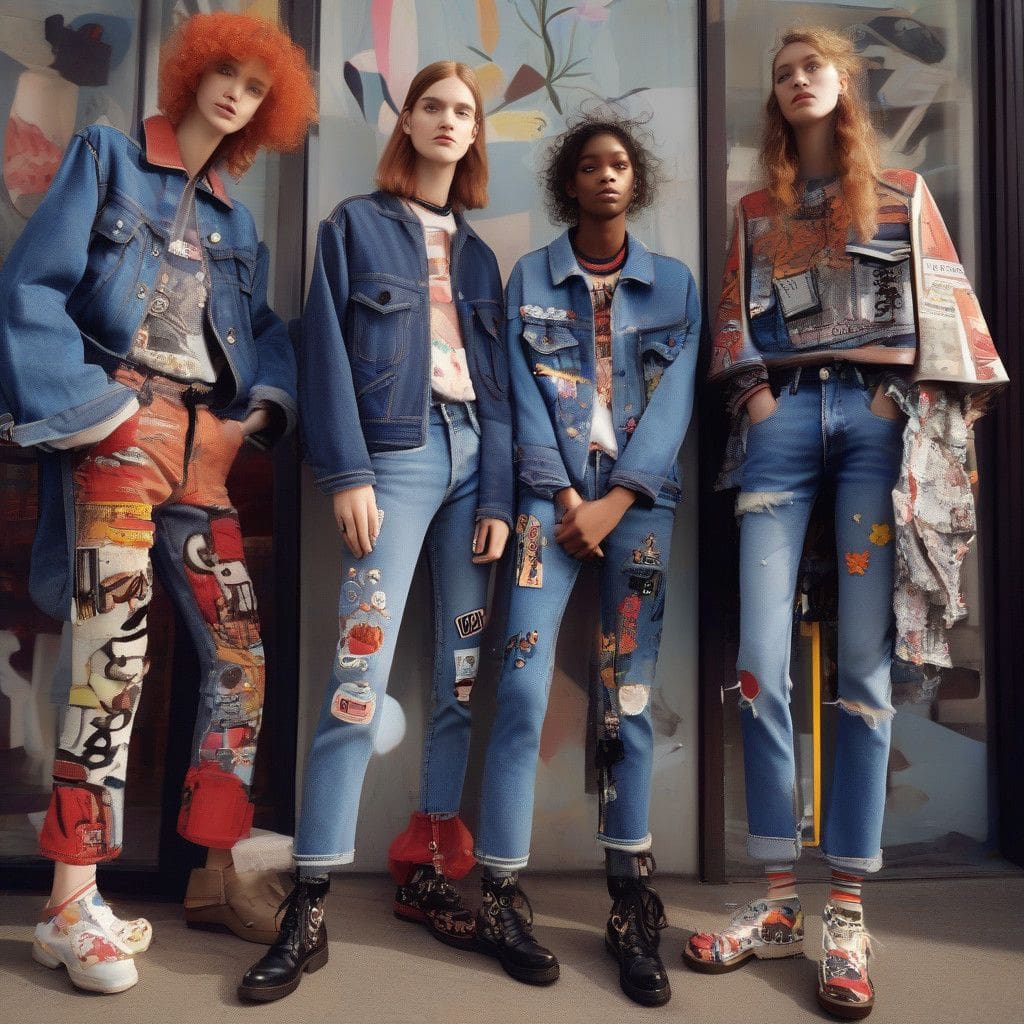In recent years, the landscape of men’s fashion has experienced a remarkable transformation, particularly in the realm of denim. The once-stagnant market is now buzzing with vibrant designs and bold styles, appealing to a younger, more fashion-forward demographic. This shift indicates a strong trend towards eccentricity in men’s denim, as consumers increasingly embrace unconventional looks that challenge traditional notions of masculinity in style.
Laura Baker, co-founder of New York City’s multi-brand retailer ESSX, recounts a significant change in consumer behavior regarding men’s denim. Not long ago, retailers opted for plain, heritage styles that offered little excitement. Fast forward to today, Baker emphasizes that denim releases resemble the much-anticipated drops of popular sneaker brands, with customers eagerly waiting for new arrivals. The demand extends beyond standard jeans; customers now seek unique pieces that stand out.
A prime example is the line of jeans from Los Angeles label 424, crafted from calf leather and treated to resemble denim. Baker notes that these jeans often sell out before they even hit the shelves, showcasing the fervor for distinctive denim offerings. Retail analytics platforms like StockX corroborate this enthusiasm, reporting that collaborations, such as Levi’s with Denim Tears, dominate sales, accounting for a significant portion of transactions in the category.
The interest in statement denim is evident across brands, especially among smaller, cult labels such as Kapital and Denim Tears. Reports from retail insights firm Edited indicate that Kapital holds the most inventory at luxury retailer Mr. Porter, with a significant portion featuring ornate details, including patchwork and jacquard designs. This trend isn’t just a flash in the pan; it’s also making waves on runways. Brands like Who Decides War and established collaborations with denim stalwarts like Sacai and G-Star highlight the evolution of denim from a basic essential to a canvas for artistic expression.
Denim consultants, like Amy Leverton from Denim Dudes, note that the thirst for expressive, adventurous styles has surged among young male consumers. While traditional options still have a place in the market, the explosion of creative and whimsical fits has created new revenue opportunities for brands willing to think beyond conventional five-pocket jeans.
However, it’s crucial to acknowledge that while the pendulum is swinging towards bolder styles, the mass market may not yet fully embrace this shift. Many consumers remain partial to classic designs, presenting a challenge for retailers. The key for success lies in striking the right balance between innovative designs and established styles. Retailers like Urban Outfitters illustrate this approach by offering baggier jeans adorned with unique details such as cargo pockets and embroidery. Marybeth Cahill, chief merchandising officer at Urban Outfitters, emphasizes that denim remains a cornerstone of their business, driven by insights from their customer base.
Looking at niche brands provides additional clarity on this burgeoning market. The Utah-based brand Bad Son, known for their “Overgrowth” cargo pants featuring ivy-like embroidery, successfully taps into the aesthetic that resonates particularly well with Gen-Z men. Co-founder Conner Lobato mentioned that their denim, priced between $160 to $200, has secured $2.1 million in sales with only two collections available online. The allure of such brands stems from consumers wanting to be part of a unique narrative. The cult following among younger generations not only signals the end of uniformity in men’s fashion but champions individuality.
As new brands rise through social media channels and quicker connections become available between creators and consumers, an increasing number of independent denim labels are experimenting with fabrics, fittings, and visuals. The COVID-19 pandemic, while disruptive, has catalyzed this shift, enabling brands like Proleta Re Art and Paradoxe Paris to find their footing and develop dedicated audiences online.
The evolution towards quirky and wild designs reflects a broader societal trend where individual expression takes precedence over past fabrications of masculinity in fashion. Classic denim holds its pedigree, but the incremental shift towards a more vibrant and dynamic aesthetic is unavoidable. As men across demographics look beyond traditional fashion to explore daring styles, it becomes evident that the denim landscape is ripe for innovation and creativity.
In conclusion, the expanding interest in unconventional men’s denim suggests a future where uniqueness is celebrated. As retailers adjust their offerings to cater to this whimsical turn in success, it’s clear that creativity in denim has only just begun to unfurl its potential. Brands willing to adapt and embrace this ethos will likely reap the rewards of this emergent and complex market.












